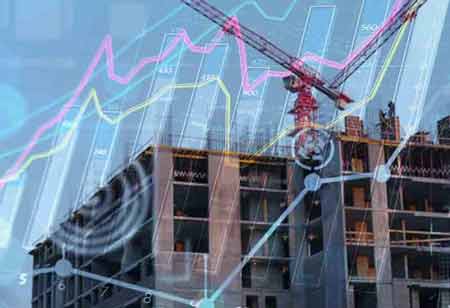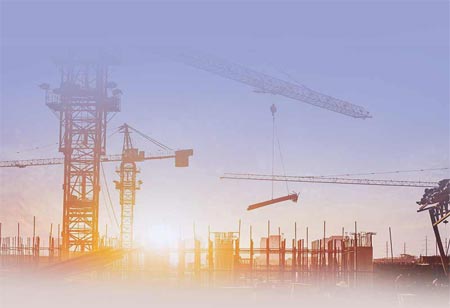Thank you for Subscribing to Construction Business Review Weekly Brief
Specials
- Apartment and Condominium Contractors Canada
- Decking Canada
- Architectural Glass Europe
- MEP APAC
- Construction Saudi Arabia
- German Apartment and Condominium Contractors
- Construction Law APAC
- Outdoor Construction
- Foundation Construction Canada
- MEP Canada
- Kitchen and Bath
- Cold Storage Construction APAC
- Precast Concrete Europe
- Construction Staffing Europe
- Pre-Construction Services
- Flooring System APAC
- Scaffolding Canada
- Swimming Pool Construction Canada
- Construction Management Canada
- Cold Storage Construction Canada
- Flooring Systems Europe
- Residential Construction
- Concrete Canada
- Construction Cladding Europe
- Construction Cladding APAC
- Concretes, Aggregates and Construction Materials APAC
- Concretes, Aggregates and Construction Materials Europe
- Commercial Contractors Europe
- Commercial Contractors APAC
- Dummy
- Construction Insulation, Coating and Waterproofing
- Construction Management APAC
- Landscaping Canada
- Construction Coating Europe
- Construction Tech Startups Europe
- Insulation Services Europe
- Mechanical Contractor Canada
- Mould Remediation and Testing Europe
- Swimming Pool Construction APAC
- Building Sealing Solutions Europe
- Construction Engineering Services
- Mechanical Electrical and Plumbing
- Roofing Systems Europe
- Architectural Glass APAC
- Startups APAC
- Construction Forensic and Owners Representative
- Flooring System
- Waterproofing APAC
- Wall Systems
- Safety and Compliance Europe
- Construction Bidding and Auctions
- Modular and Prefab Construction
- Architectural Glass
- Construction MENA
- Construction Demolition and Recycling Europe
- Modular Construction Europe
- Construction Interiors
- Steel Building APAC
- HVAC
- Doors and windows
- Construction Latam
- Building Information Modeling APAC
- Sustainable Construction APAC
- Building Restoration and Maintenance
- Commercial Contractors
- Specialty Construction
- Construction Engineering Canada
- Construction Engineering MENA
- Modular Construction Canada
- Modular Construction APAC
- Roofing and Siding Systems
- Workforce Management and Staffing
- Roofing Systems APAC
- Construction Consulting
- Steel Building Europe
- Construction Demolition and Recycling APAC
- Safety and Compliance APAC
- Concretes, Aggregates and Construction Materials
- Construction Cladding
BIM's Impact Across the APAC Region
BIM remodels APAC's architecture, engineering, and construction industry by enhancing collaboration, improving design accuracy, boosting efficiency, and driving sustainability. It is positioning itself as an essential tool for a smarter, green

By
Construction Business Review | Tuesday, March 11, 2025
Stay ahead of the industry with exclusive feature stories on the top companies, expert insights and the latest news delivered straight to your inbox. Subscribe today.
BIM remodels APAC's architecture, engineering, and construction industry by enhancing collaboration, improving design accuracy, boosting efficiency, and driving sustainability. It is positioning itself as an essential tool for a smarter, greener, and more innovative future.
FREMONT, CA: Building Information Modeling (BIM) is rapidly transforming the architecture, engineering, and construction (AEC) industry across the Asia-Pacific (APAC) region. Once considered a niche technology, BIM is becoming a cornerstone of modern construction, driven by increasing project complexity, demand for sustainability, and the push for digital transformation.
Enhancing Collaboration in APAC’s Diverse AEC Ecosystem
The AEC sector in the region is characterized by a diverse array of stakeholders, including architects, engineers, contractors, subcontractors, and government agencies, often collaborating across vast geographical distances. BIM is crucial in fostering seamless collaboration as a centralized information-sharing platform. By providing a single source of truth, BIM ensures that all stakeholders can access and update project data in real-time, eliminating data silos and minimizing miscommunication. Additionally, BIM-driven visualizations and simulations enhance communication by enabling stakeholders to understand complex design concepts better and identify potential clashes early in the process.
Cloud-based BIM solutions are gaining traction across APAC. They facilitate remote collaboration and enable project coordination across different time zones—an essential feature for large-scale infrastructure projects spanning multiple countries. The adoption of Common Data Environments (CDEs), which serve as centralized repositories for project information, is also increasing, ensuring that all stakeholders work with the most up-to-date and accurate data.
Boosting Design Accuracy and Reducing Errors
BIM significantly enhances design accuracy, reduces errors, and drives cost efficiencies in construction projects. Through automated clash detection, BIM software identifies conflicts between various building systems—structural, mechanical, and electrical—allowing designers to resolve issues before construction begins and mitigating costly rework. BIM models also enable design validation through simulations that assess energy efficiency, structural integrity, and overall building performance, ensuring compliance with regulatory standards.
Moreover, BIM supports prefabrication and modular construction techniques by enabling the creation of detailed digital models of prefabricated components, improving accuracy in fabrication and assembly while accelerating project timelines. The increasing adoption of digital twin technology—virtual replicas of physical assets—further enhances project efficiency by enabling predictive maintenance, performance optimization, and streamlined asset management.
Driving Project Efficiency and Sustainability
BIM is pivotal in improving project efficiency and advancing sustainable construction practices across APAC. By enabling accurate project planning and scheduling, BIM allows project managers to monitor progress, anticipate potential delays, and implement corrective measures proactively. Additionally, it facilitates precise cost estimation and control by providing detailed insights into material quantities and labor requirements.
The technology also supports sustainability initiatives by enabling energy performance analysis, optimizing material selection, and minimizing construction waste—aligning with APAC’s growing emphasis on green building practices. Furthermore, BIM’s role in lifecycle management ensures that comprehensive building data is available for ongoing facility management and maintenance, extending the value of assets beyond construction completion.
With many APAC governments mandating the adoption of BIM for public projects, its implementation is rapidly becoming a standard industry practice. Leading the way in BIM integration, countries such as Singapore, Hong Kong, South Korea, and Australia are setting benchmarks for digital transformation in the AEC sector. As adoption accelerates, BIM will continue to drive collaboration, efficiency, and sustainability in APAC’s built environment.
BIM is poised to play an increasingly important role in shaping the future of the AEC industry in APAC. As technology evolves and adoption rates increase, BIM will drive greater efficiency, sustainability, and innovation in the region's construction landscape. Integrating advanced technologies like AI, machine learning, and digital twins will further enhance BIM's capabilities, making it an indispensable tool for building a smarter and more sustainable future.





